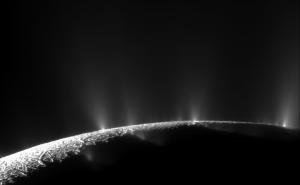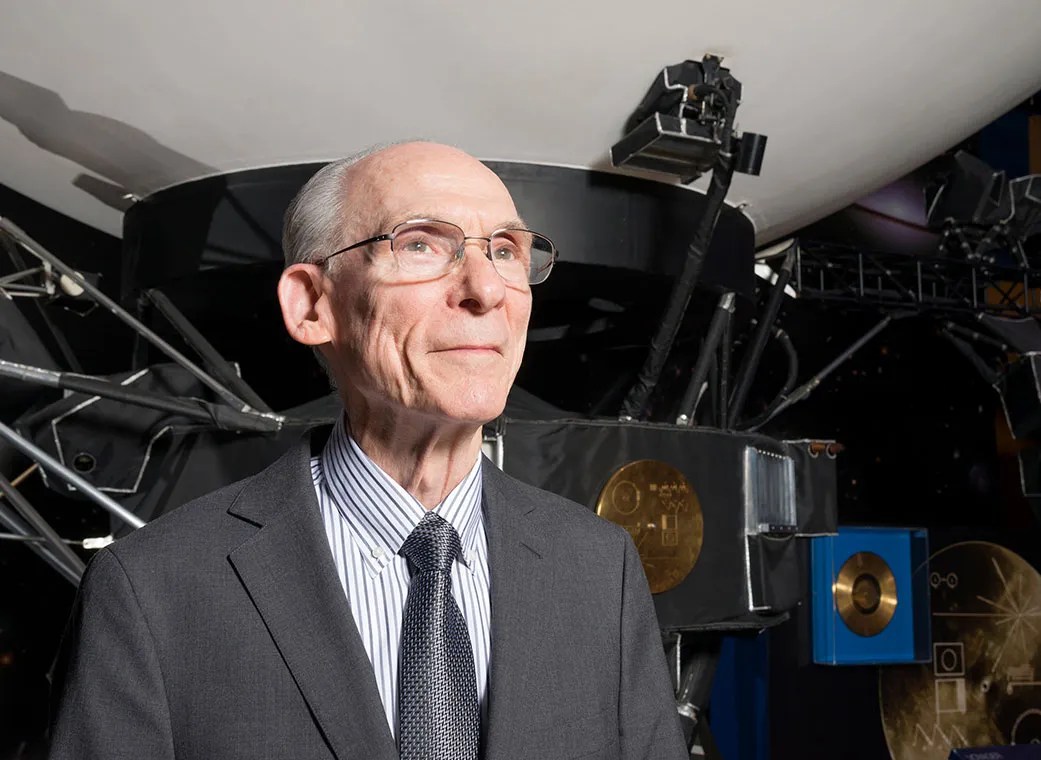Cassini is orbiting Saturn with a twelve-day period in a plane inclined 57.1 degrees from the planet's equatorial plane. The most recent spacecraft tracking and telemetry data were collected on March 12 by a 34-meter Deep Space Network station at Madrid, Spain.
Cassini is orbiting Saturn with a twelve-day period in a plane inclined 57.1 degrees from the planet’s equatorial plane. The most recent spacecraft tracking and telemetry data were collected on March 12 by a 34-meter Deep Space Network station at Madrid, Spain. Except for some science instrument issues described in previous reports, the spacecraft continues to be in an excellent state of health with all of its subsystems operating normally. Information on the present position of the Cassini spacecraft may be found on the “Present Position” page at: http://saturn.jpl.nasa.gov/mission/presentposition/.
This week’s highlight was the Cassini Mission’s final targeted flyby of Saturn’s second largest moon Rhea on Saturday, while the S77 command sequence controlled the spacecraft’s activities. Meanwhile on the ground, work and planning proceeded on future sequences.
Wednesday, March 6 (DOY 065)
The Composite Infrared Spectrometer (CIRS) completed a fifteen-hour observation of ring particles as they moved into Saturn’s shadow, mapping temperatures to help determine the particles’ thermal inertia. ISS then performed an observation in the Satellite Orbit Campaign. Following this, CIRS, the Imaging Science Instrument (ISS), the Ultraviolet Imaging Spectrograph (UVIS), and the Visible and Infrared Mapping Spectrometer (VIMS) jointly began an observation of the rings for 12.5 hours to search for periodicities in spoke-like features (http://go.usa.gov/4WGP).
Based on tracking data from the navigation team, the S77 team determined that it would not be necessary to execute the final Rhea approach Orbit Trim Maneuver (OTM); the predicted flyby of Rhea was sufficiently close to the desired encounter conditions to allow cancellation of the OTM.
Thursday, March 7 (DOY 066)
ISS observed the rings for an hour to reacquire and track the orbits of individual known propeller features (http://go.usa.gov/YyGR); VIMS squeezed in two-minute Saturn storm-watch observations before and after this. Finally, the Magnetometer started a seven-hour calibration while rotating the spacecraft about its X axis.
Friday, March 8 (DOY 067)
ISS made two observations of the tiny irregular moon Hyrrokkin from over 18 million kilometers away. Hyrrokkin, named after a giantess from Norse mythology, is in a retrograde orbit about Saturn. The observations, which extended into the next day for a total of 21 hours, will help determine its rotation period.
Saturday, March 9 (DOY 068)
Deep Space Network stations on three continents, one after another as the Earth turned, maintained communications with Cassini as it encountered Rhea. This provided precision Doppler measurements, which registered the spacecraft’s radial speed, and in turn will enable the Radio Science team to determine Rhea’s gravity field. The gravity field can be used to infer key information about Rhea’s internal structure. CIRS observed Rhea’s south pole on the inbound leg, and ISS imaged the north pole on the outbound with the other optical remote-sensing instruments also taking data. More information appears on the Rhea R-4 flyby page, which has now been updated with links to raw images: http://saturn.jpl.nasa.gov/mission/flybys/rhea20130309/
Sunday, March 10 (DOY 069)
ISS finished up the Rhea observations by observing Rhea’s north polar region for nearly three hours. Next, Cassini passed through periapsis going 39,262 kilometers per hour relative to Saturn, at about 422,000 kilometers above the cloud tops. Finally, UVIS and CIRS made observations of three different stars, Kappa Velorum, Eta Carinae and Delta Centauri, as they were occulted by the rings.
Post-encounter tracking indicated that the Rhea flyby was exceptionally accurate and that the post-flyby “cleanup” OTM that would have executed on Monday would not be required.
Monday, March 11 (DOY 070)
UVIS observed Saturn’s aurora for eleven hours, then CIRS observed the rings for eight hours.
An image featured today shows that the spokes are still active in Saturn’s B ring. View the image in full-resolution to see these subtle features: /resources/15750
Tuesday, March 12 (DOY 071)
The Cosmic Dust Analyzer (CDA) performed a fifteen-hour observation in the campaign to characterize dust that orbits Saturn in a retrograde direction.
































